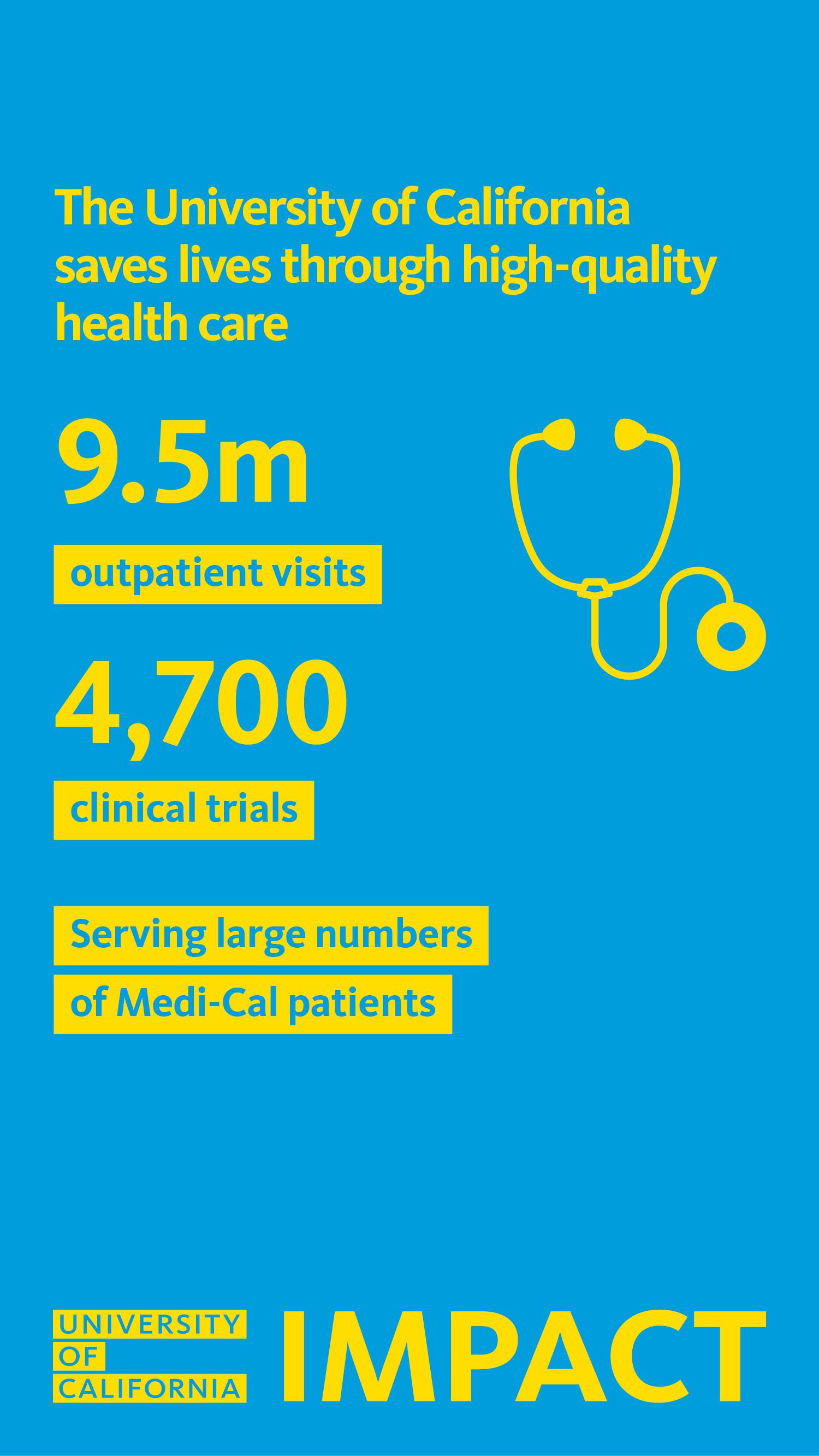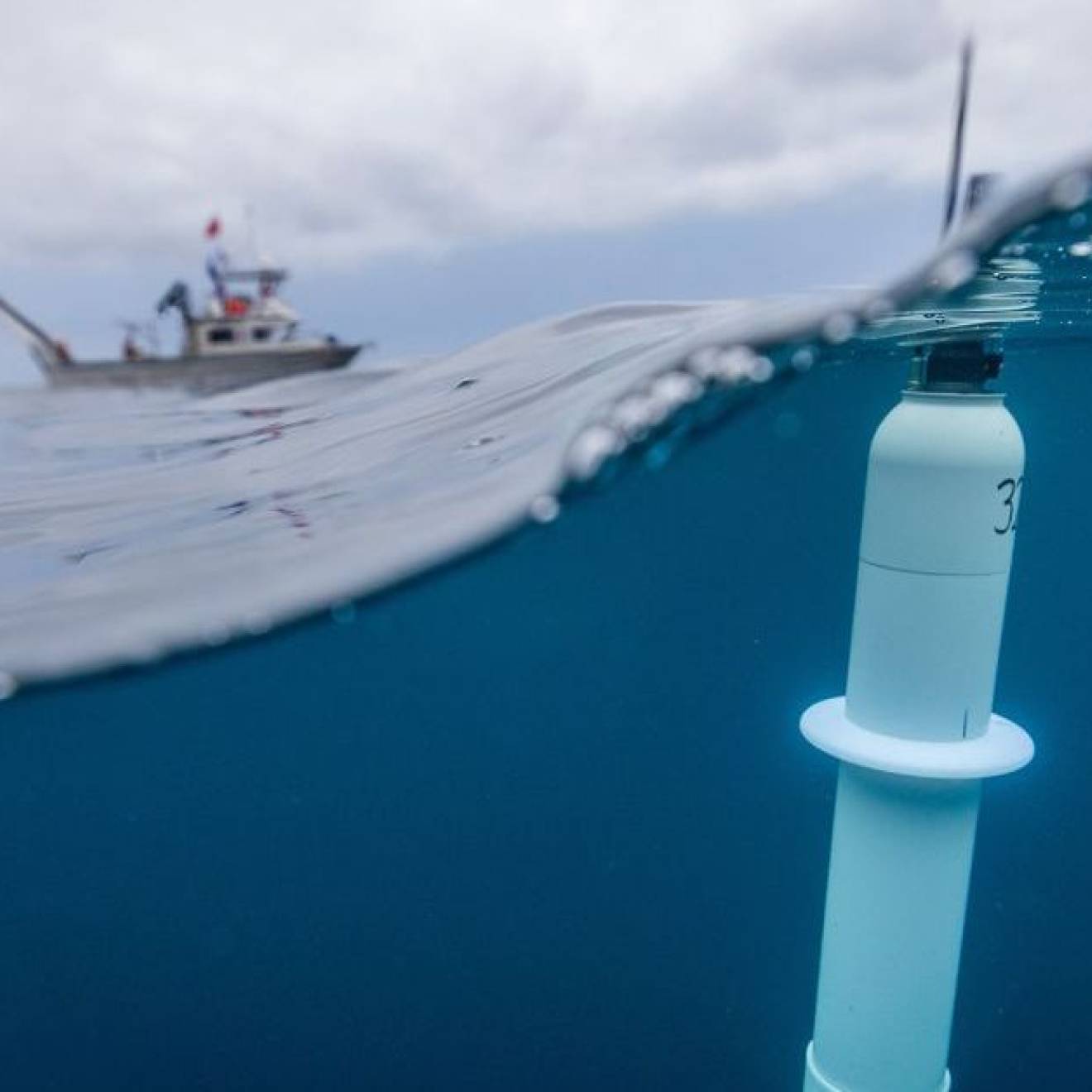Julia Busiek, UC Newsroom
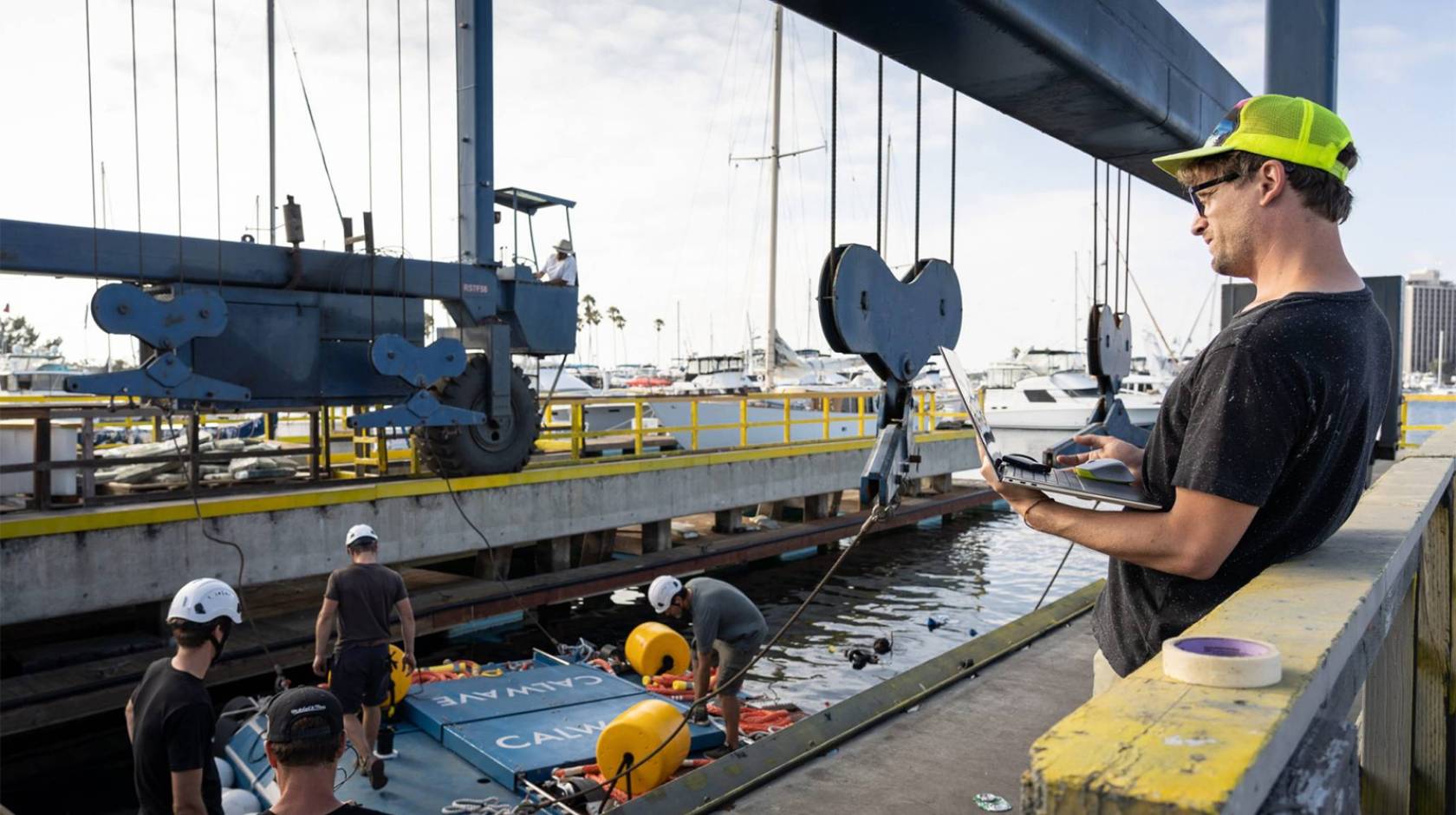
The sun goes behind a cloud. Winds die. Rivers slow to a trickle. But the ocean never rests.
And yet, while we’ve built solar panels, wind turbines and hydroelectric dams all over California to generate renewable energy, we’ve done almost nothing to harness the constant churn of waves against our 840-mile coastline.
“We saw that there’s an enormous gap there, that we don’t have the technology yet to harness all that unused wave power,” says UC Berkeley alum Marcus Lehman. While earning his Ph.D. and as a visiting scholar with Prof. Reza Alam, Mechanical Engineering UC Berkeley, Lehmann designed a sturdy metal box that floats just below the ocean surface, housing generators that turns the wave’s motion into usable electricity, just like a breeze turning a windmill.
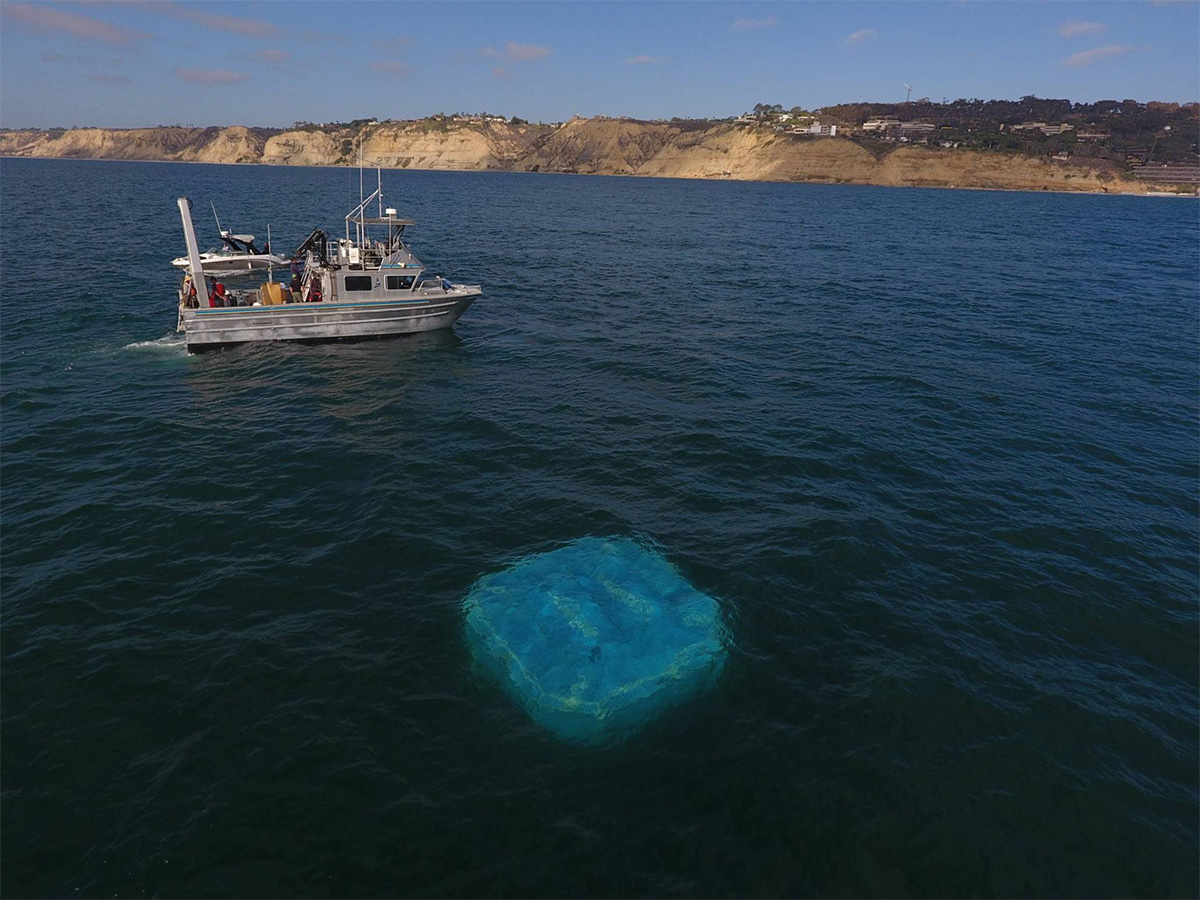
Wave power is more consistent and predictable than wind, solar or hydroelectric. And it’s plentiful: Each year, waves on the West Coast release enough energy to power 23 million homes, equal to two-thirds of the electricity currently generated in the region. “That’s the main mission for us: to unlock that enormous resource,” Lehman says.

With the help of the UC CITRIS Foundry and LBNL Cyclotron Road, Lehmann and his cofounders turned this research into a startup called CalWave. Today the company is building wave energy converters and offering their solution for a commercial pilot to the Mowachaht/Muchalaht First Nation in British Columbia, Canada. The community is reclaiming their ancestral land on Nootka Island off the coast of British Columbia, and CalWave’s technology is harnessing the turbulent seas offshore to power a microgrid that will establish the community’s energy independence.
CalWave is one of over 20 innovations that originated in UC research featured at an Innovation Showcase in Sacramento earlier this month. The showcase was part of UC Day, when students, faculty, staff and alums from every UC campus head to the state capitol to meet with lawmakers. The annual event is a chance to highlight some of the outstanding benefits the university delivers for Californians and shore up support among lawmakers for UC’s mission.
The university’s $7 billion research enterprise is the juggernaut behind innovations like CalWave. UC researchers came up with an average of four new inventions every day in 2022, making advances in medicine, technology, agriculture and energy and solving some of the gnarliest problems facing California and the world.
Read on to learn about a few of the brilliant UC inventors we highlighted in Sacramento.
MemoryAir: Fight memory loss in your sleep
Our sense of smell has unmatched power to evoke memories — but as we age, we lose sensitivity to aromas, a shift that’s linked to cognitive decline and depression. “Unlike with vision changes that we treat with glasses and hearing aids for hearing impairment, there has been no intervention for the loss of smell,” says Michael Yassa, a professor of neurobiology at UC Irvine.
Research from Yassa’s colleagues shows that giving your smell receptors a nightly workout might help stave off their decline, and that keeping your sniffer strong could save your memories as well. In a 2023 study, UC Irvine neurobiology professor Michael Leon’s team diffused distinctive scents into the bedrooms of older adults while they slept. The participants exposed to these scents reaped a 226 percent increase in cognitive capacity compared to the control group.
With these results in hand, Leon founded Memory Air, a company that manufactures diffusers that release a variety of scents throughout the night, to bring the benefits of this research to consumers.
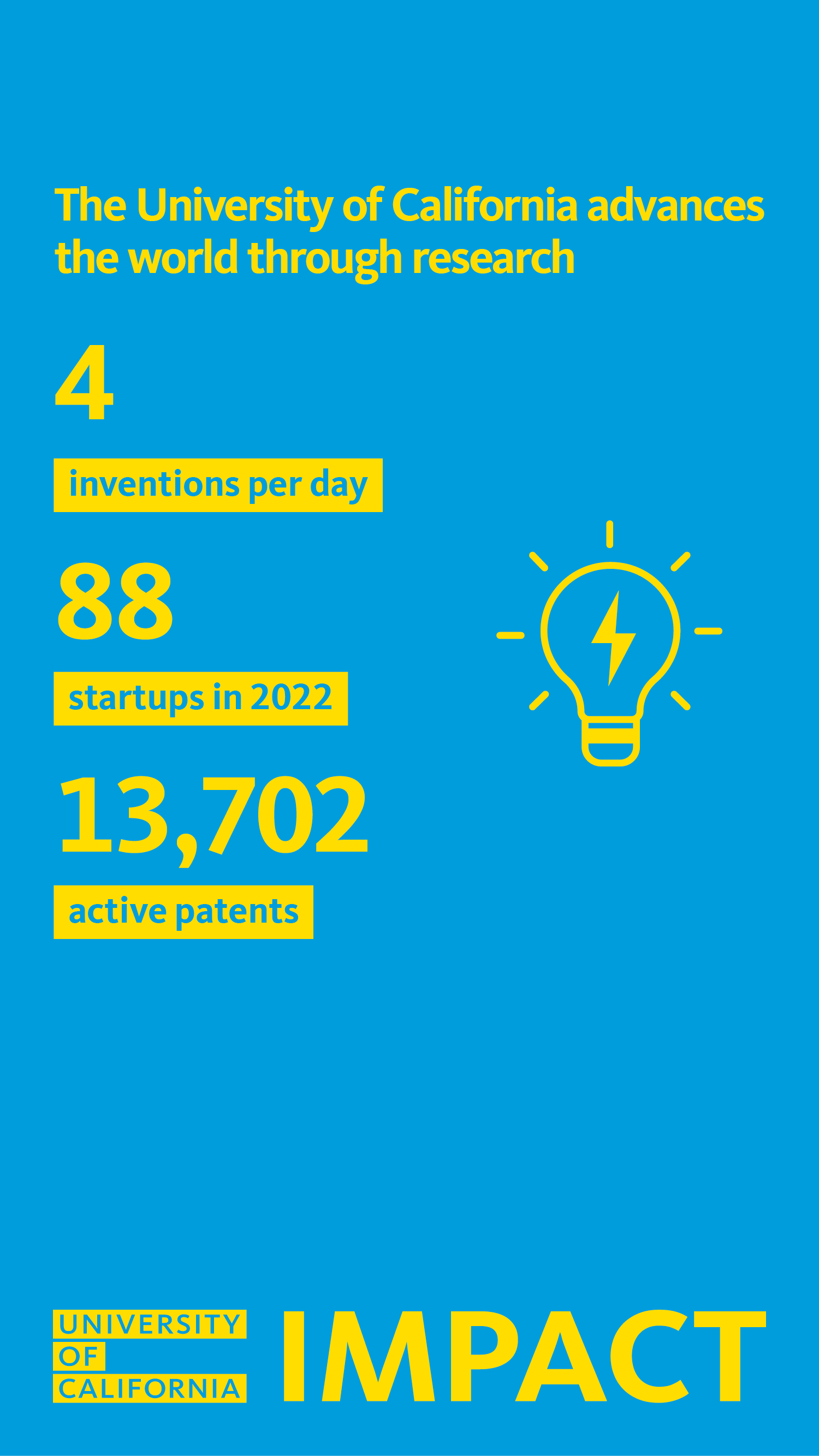
NuCicer: Upping the garbanzo game with ancestral genetics
Consider the humble chickpea: beige, plump, thick skin, goes into hummus. Rich in protein and fiber, it’s a dietary workhorse, sure, but maybe not the biggest thrill in your kitchen cabinet.
Doug Cook, a UC Davis professor of plant pathology, says it’s time to reconsider. It turns out the beans we’ve all been eating for the past 50 years have come from just a single species, bred for mass production. This bean’s ancestors — a diverse, colorful, hearty group of legumes — offer a range of useful traits that could help solve some of the biggest challenges facing today’s food system.
Cook joined forces with his daughter, Kathryn Cook, to found NuCicer, a company that’s bringing a dazzling array of wild chickpeas to market. They’re developing varieties that pack a more powerful nutritional punch, including 75 percent more protein than the conventional species. NuCicer’s beans also need less water and help regenerate soil nutrients, making them easier on the climate.
SiLi-ion: Building a better battery
Our lives run on rechargeable lithium-ion batteries. They power our phones, laptops and smartwatches, our vape pens, power tools and electric vehicles. And as our economy transitions from running on fossil fuels to renewably generated electricity, experts anticipate lithium-ion batteries will become an even more important component of our energy system.
Lithium-ion batteries may be a modern marvel, but they’re not perfect. For one thing, most use graphite, a mineral that’s in high demand and short supply, and which is both environmentally damaging and carbon intensive to mine. A team led by UC Riverside professors Lorenzo Mangolini and Mark Hatch has invented an alternative to graphite. They call their innovation a plasma-ultra-nano silicon-graphitic-flake. Their company, SiLi-Ion, is bringing the product to market for a range of applications, both familiar and strange.
Even though the sound of it is something quite atrocious, the plasma-ultra-nano silicon-graphitic-flake is more widely available and less environmentally destructive than graphite — and it works better, too, making batteries that charge faster and run longer on a single charge.
BioSynesis: Fighting a deadly infection among hospital patients
UC Merced Professor Clarissa J. Nobile is fighting on the front lines of humanity’s war against disease-causing microbes. She’s cofounder and CEO of BioSynesis, a startup that’s detecting and treating infections in hospitals.
Each year over 5 million Americans need hospital treatment requiring a central catheter, a tube that delivers fluids, nutrition or medicine straight to a patient’s heart. Central lines can play a critical role in a patient’s treatment, but they carry risks, causing hard-to-treat infections in more than half of patients.
These infections are caused by a form of microbial growth called a biofilm, a community of bacteria or fungi that produces its own slimy, protective coating. The coating sticks fast to surfaces and can withstand attacks from our immune system, antibiotic medications and cleaners. Experts say biofilms are responsible for four out of every five microbial infections — but no current products or patents targeted these insidious invaders. It’s a gap that Nobile and her collaborators at BioSynesis aim to close through targeted research and development.
UC's most amazing discoveries, straight to your inbox
Want to stay current on the coolest ideas and biggest advances coming out of the university? Subscribe to Fiat Lux, our weekly newsletter rounding up the best of UC research and expertise.
